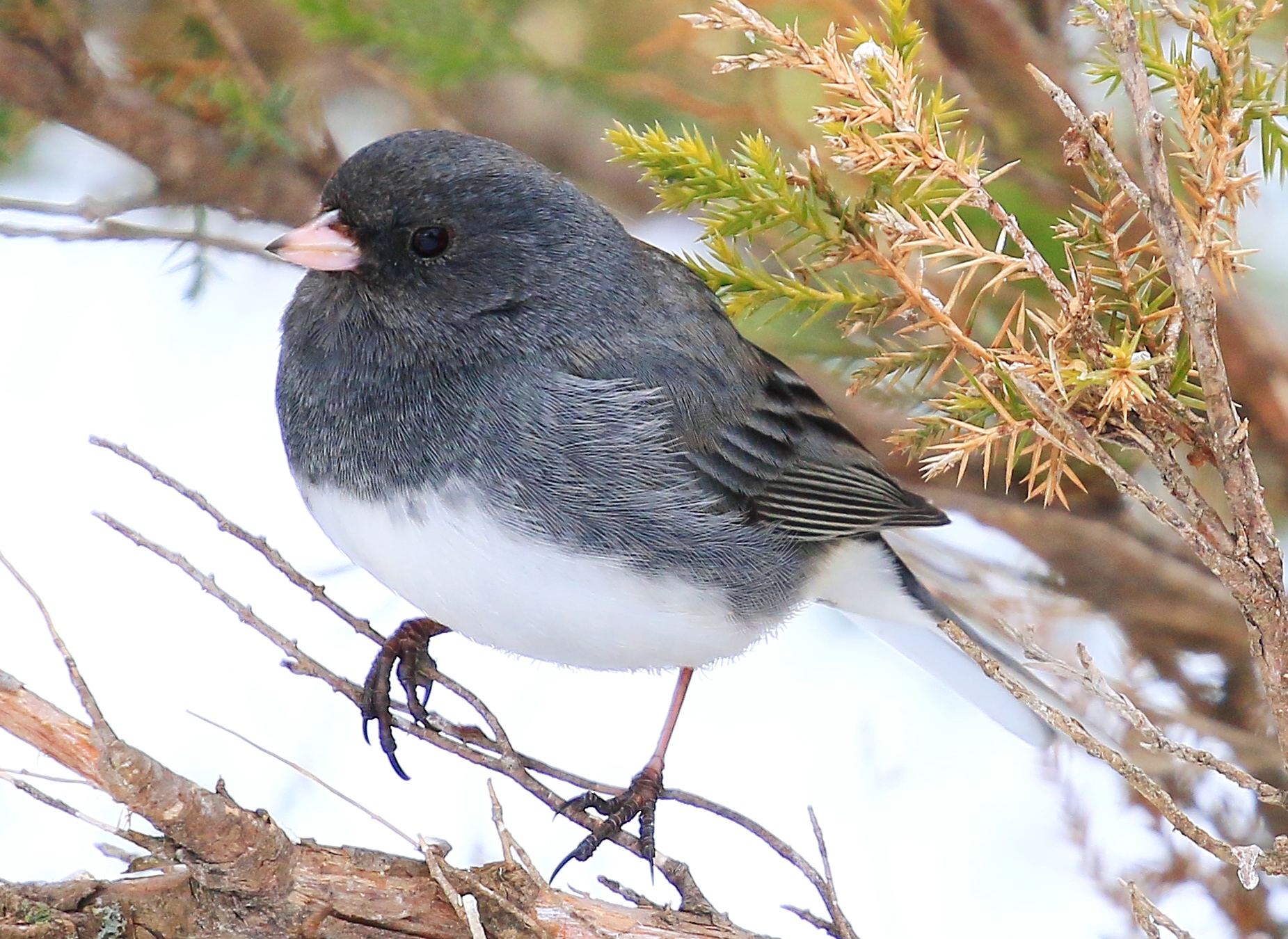Iowa's Snowbirds
By Erica Place on January 4, 2023 in Blog
Many birds call Iowa home for at least a portion of the year. Whether one of our wetlands is a brief but critical stop on a bird’s annual migration from northern Canada to the southern tip of South America, or one of our open prairies is the perfect summer home to raise young, more than 300 species of birds can regularly be found in our state with a total of 431 individual species being recorded within Iowa’s borders. That species list shuffles come winter; while some birds depart for a milder climate, we welcome visitors from the comparatively harsher north.
 At the Feeder
At the Feeder
While your feeders will have several newcomers, none are as abundant as dark-eyed juncos (Junco hyemalis). They arrive suddenly and en masse come mid-October. This medium-sized sparrow hangs in fairly large flocks, hopping in groups looking for food on the ground. Sunflower chips or cracked corn are sure to attract them. While you’ll mostly see ones that are slate gray with white bellies, there are a few color morphs with pops of buffy orange. If your view is from the rear, white outer tail feathers are visible in flight.
From the Car
Especially on the coldest, most blustery days, the shoulders of rural highways are full of snow buntings (Plectrophenax nivalis) and Lapland longspurs (Calcarius lapponicus). In mixed flocks with our year-round resident horned larks (Eremopholia alpestris), they’re forced to the roadsides when snow gets too deep to find seeds in open fields. And on the utility pole above, take an extra second to study that hawk. If it’s boasting a thick, dark band across the belly, it’s probably a rough-legged hawk (Buteo lagopus). So named for its feathered legs, this winter resident often perches on branches that seem way too small for their size.
In the Woods
The cracks and crevices of tree trunks and branches are a great place to look for food in harsh winters. Two new arrivals are searching for snacks but approach their meals from different directions.
Just like the white-breasted nuthatch (Sitta carolinensis) who can be found in Iowa any time of year, the red-breasted nuthatch (Sitta canadensis) is often seen foraging down the trunk face first. Their long thin bills are perfectly suited for retrieving morsels between the tree bark, and their stocky bodies and burnt orange bellies make them especially adorable. They usually give away their location with nasally calls that sound like a miniature horn. Offer suet or peanuts at your feeders and they may show up in your backyard.
Scan the trunks with an extra careful eye, and you might spot a brown creeper (Certhia americana) perfectly hidden against the bark. Usually clung to the tree moving upwards with head higher than tail, they also are well-adapted to foraging in trees with their long downcurved bills. Their bright white belly is pressed against the trunk and not usually visible, but they might make their presence known to intent listeners with a thin high-pitched trill.
On the Water
Though many will head south where they can more reliably find water, some waterfowl will stick around as long as they can find at least a little bit of an opening in the ice. The common goldeneye (Bucephala clangula) is a diving duck and males stand out with their white cheek patches and yellow eye. In winter they’re mostly looking for aquatic invertebrates, fish or submerged vegetation.
Also dining underwater is the common merganser (Mergus merganser), oftentimes traveling in small groups. Males and females of this species have different plumage, but both have slender long red bills that are excellent for grabbing fish. Like the goldeneye and other ducks, their bare legs can stay warm in frigid waters with a unique adaptation that transfers heat from warm arteries to cool veins.
There are many others! A great way to learn more about Iowa’s winter residents is by tagging along for a Christmas Bird Count. The nation’s longest running community science project, Christmas Bird Counts have been held each winter for more than 120 years. With designated counts all over Iowa, there’s likely an opportunity to join one near you, providing the perfect learning experience with local experts and the birds spending time in your neighborhood or parks this winter.